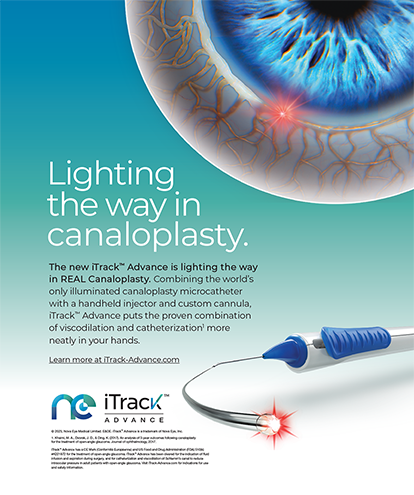Today's Practice | Mar 2006
Radio Advertising
A guide to making the most of your marketing dollars and generating a return on your investment.
Amy Gray, Don Holmes, and Joan Wahlman
Does your practice depend on radio advertising as a key component of your strategic plan to generate new patients for LASIK and the deluxe lens markets? As many practices begin to allocate their 2006 radio-advertising budgets, they are finding that it is a brand new game out there. In most markets during the last 12 months, prime 60-second morning and evening drive spots (6AM to 10AM and 3PM to 7PM) have doubled in price. Additionally, the availability of the 60-second commercial has decreased by an average of 30% to 40% on key stations that traditionally reach the desired target market. Although most ophthalmic practices prefer the 60-second length for their messages, many must now promote themselves in just 30 seconds. The purpose of this article is to highlight what is happening today in order for ophthalmologists to implement a more effective radio buy in 2006.
THE “LESS IS MORE” TREND
Clear Channel Communications (San Antonio, TX), the nation's largest radio group with more than 1,200 stations, initiated its “Less is More” policy in January 2005 in response to advertisers' and listeners' complaints about too many commercial spots per hour. With competitive technologies such as satellite radio and the Internet directing consumers' attention away from traditional radio, the industry began taking listeners' complaints to heart. In 2004, Clear Channel stations ran 14 60-second advertisements per hour during the morning drive and 12 60-second ads per hour during the midday and evening drives on average. The “Less is More” policy decreased the availability of 60-second spots by 40%, and Clear Channel charged a premium price in order to move clients to 30-second spots in many markets.
Initially, some advertisers took their business to other stations, although now many have also moved to increasing their revenue by reducing inventory and charging higher prices. The overall effect is an industry-wide reduction in the total available inventory and average spot length, with significant increases in price (Figure 1).
John Hogan, CEO of Clear Channel Radio, said, “running fewer commercials per hour and improving ad copy” benefits listeners and advertisers. Although the company did not release any research showing that its listeners are actually paying greater attention to the shorter commercials, Mr. Hogan implied that the switch has made Clear Channel stations more entertaining and therefore better for advertisers: “We've also made vast improvements to benefit our advertisers, including adding shorter, more effective radio spots, fewer spots per commercial break, and improved creative.”1
THE IMPACT ON OPHTHALMOLOGY
Historically, radio has been ophthalmology's dominant advertising medium, thanks to its ability to capture specific, targeted audiences at a fair cost per lead. Practices have spent millions of dollars to expose consumers to their elective offerings, and they have often competed with aggressive retailers that have much larger budgets. Quarterly buying patterns that traditionally bought the needed frequency and reach are no longer effective. Many practices are finding it harder to access and afford the same prime advertising spots that yielded a successful return on investment in the past.
A significant portion of the typical 2006 advertising plan will now require a 30-second commercial format, often at the same rate you paid for a 60-second spot 1 year ago (Figure 2). Annual strategic planning and buying are needed to successfully and consistently access the prime spots at a price that yields a satisfactory return on investment.
Typical ophthalmology practices must conduct long-term strategic planning that includes targeted market assessments, budget allocation, rate negotiations, and the placement of annual contracts in order to obtain competitive rates and prime spots. A practice purchasing its media in house and allocating the same budget as last year can expect to purchase only 50% to 60% of the frequency in 2006.
TIPS FOR SUCCESS
Success with today's radio programming entails careful long-term planning. First, you should determine in advance your promotional mix for a 12-month period. For instance, decide on which procedures to advertise, whether it be LASIK, cataracts, deluxe lenses, etc. Then, determine the age range for the target audience for each procedure, in addition to each group's income level, and type of insurance coverage they carry.
Next, research radio stations and their formats (talk, news, or specific musical genre such as adult contemporary, country, rock, etc.) in your market based on the audience you wish to attract. Determine what types of radio stations reach your target audience and then research their formats to assess the highest number of listeners. Be specific regarding your selection criteria, such as male- versus female-dominated audiences and age criteria (narrow these segments and ask each station for breakout data); program formats; and income range per listening audience per morning, evening, and midday audiences, or for hours that you are open for business to handle calls.
One should review radio stations' seasonal opportunities and issues. Plan accordingly. For example, LASIK and flex-spending campaigns during the year's fourth quarter can draw significant surgical volume in the first quarter of the next year. Holiday weeks typically find consumers focused on vacations versus medical procedures. Retail competition and political campaigns during fourth-quarter holidays drive per-spot pricing up.
Estimate the potential revenue to be generated from each of the target audiences based on your research and allocate money to prime opportunities. Avoid the tendency to spread your advertising dollars across too many radio stations, a strategy that can reduce advertisements' impact due to their infrequency and failure to reach your target audience.
Consider using select stations. Consistent advertising on prime stations that reach your chosen audience within a given time frame can be effective. We recommend a minimum commitment of 3 months of radio time per station with consistent messaging in order to receive the maximum impact. The frequency of message penetration has increased from the traditional three-time average to five to seven times to generate awareness and move the consumer to an “interest” call.
Lock in annual rates with a 2-week advance notification clause before signing any contracts. It allows you to terminate each contract without penalty.
Stretch your dollars by negotiating higher priced third- and fourth-quarter rates by the first quarter of the year, when these rates are traditionally the lowest. Often, stations will offer perks to clients who lock in annual rates. These bonuses can include additional spots and sponsorship packages, either free or at significantly reduced rates. Like any business, radio stations give priority to clients that commit to their industry.
Use a professional media buyer to negotiate the best annual rate and manage your contracts. Very few radio stations will offer individuals the 15% agency discount that they have in the past. Stations that give the agency markdown habitually charge higher rates.
Request an acceptable “pod separation” or “commercial separation” between your advertisement and that of your competition to distinguish your message. Accept no less than 30 minutes. Annual contracts will help to ensure pod separation and your access to prime-time slots.
Don Holmes is Vice President of Refractive Services, Marketing, and Communication for the Cincinnati Eye Institute in Cincinnati. He may be reached at (513) 984-5133; dholmes@cincinnatieye.com.
Amy Gray is President of Impact Medical Media in Bellevue, Kentucky. She may be reached at (281) 589-2126; amy@impactmedicalmedia.com.
Joan Wahlman is Vice President of Impact Medial Media in Bellevue, Kentucky. She may be reached at (281) 589-2126; joan@impactmedicalmedia.com.
1. Mandese J. Clear Channel offers more proof that ‘less is more': time spent listening to radio. MediaPost Publications. August 8, 2005. Available at: http://publications.mediapost.com/index.cfm?fuseaction=Articles.san&s=32898&Nid=14814&p=117792. Accessed: December 20, 2005.




